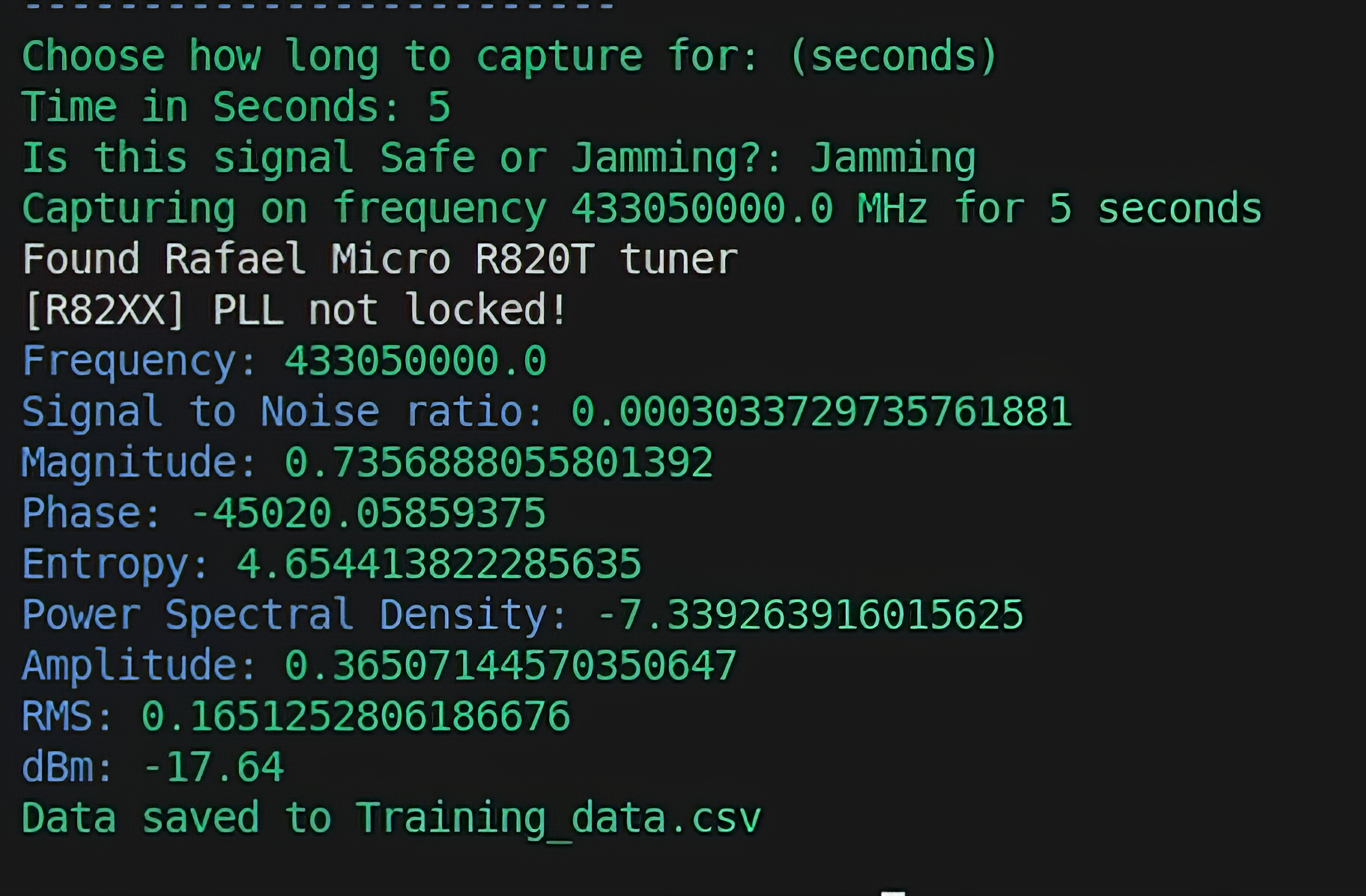Detect radio jammers with Raspberry Pi 5
For #MakerMonday this week, we’re diving into the pages of the latest issue of Raspberry Pi Official Magazine, where we find Signal Sentinel – a great research project that harnesses Raspberry Pi 5’s ability to detect radio jammers.
Cybersecurity gets plenty of media coverage, not least because most of us have become so dependent on electronic communication and internet connectivity that disruptions can cause major havoc. In splat-a-rat fashion, one type of threat gets beaten back, only for another to rear its head.

Solent University final-year student Josh Perryman reasoned that focusing his efforts on identifying a specific type of cyberthreat would be a practical use of machine learning, and also make a great excuse to finally try Raspberry Pi’s capabilities in this field for himself. His Signal Sentinel can detect jamming attacks on wirelessly connected devices including IoT hardware and even cars – an increasingly prevalent target for thieves. Josh envisages his Signal Sentinel being integrated with other systems which mitigate or prevent the attack.
Demonstration model
Having trained and worked for a decade as a chef, Josh says he “didn’t have much of a technical background, just some basic Arduino robotics projects” and a Raspberry Pi weather station build as part of his course. However, he was interested in embedded systems and IoT, had always wanted to build a project using Raspberry Pi and his final-year project gave him the perfect excuse.

The plan was to get Raspberry Pi to classify and passively detect radio frequency jamming signals. Josh would build a proof-of-concept model to demonstrate how effectively and efficiently machine learning could be used for the purpose. He selected Raspberry Pi 5 for its processing power and with an eye on planned future projects involving the AI+ HAT and Camera Module NoIR. Keen to keep build costs down, he began with an unbranded LCD that seemed to have similar capabilities to Waveshare’s. However, Josh soon found out that this was a false economy: “the unbranded screen was quite cheap and caused some electrical issues, causing Raspberry Pi to turn off when [it] was connected. Changing this for a better-quality screen fixed this issue.
Perfect fit
The Signal Sentinel was easy to build, with little call for custom parts (he bought most items from The Pi Hut, where he is a regular customer) and a flight case that could house all the components. Next, Josh mapped out areas where the RTL-SDR dongle could fit through when in use. This was critical since it would provide live radio transmission data. He also carved a channel into the case’s foam lining for the power cable, plus sections to snugly house the Waveshare screen, keyboard, and Raspberry Pi 5.
As a confident Python coder with experience of using MQTT, Josh’s main technical challenge for the RF jammer was collecting a diverse enough database. It needed to include “a good variety of jamming signals and ‘safe’ signals such as background noise, key fobs, RF devices, and radio stations”. Collecting sufficient data accounted for the large majority of the four-month project. The hardware build took only a few hours.

Josh used Ubuntu VM on his laptop for data collection, prototyping, and testing. Once he was satisfied that his machine learning models were effective, he created a simple terminal interface for the Signal Sentinel in Raspberry Pi OS and attached a miniature keyboard. The main menu monitors whichever frequency is selected by the user, while a smaller LCD indicates whether the airwaves are currently ‘safe’ or ‘jamming’, based on the model’s prediction.
Building experience
Although the SDR dongle worked well, Josh suggests someone with a keen interest in radio wanting to replicate his build might prefer the better bandwidth and range offered by a HackRF One or Pluto SDR, though these are larger and not necessarily ideal for fitting inside a small flight case. However, the Signal Sentinel is best used in a lab environment where jamming signals can be contained to prevent accidental interference. Having submitted his final dissertation, Josh intends to refine his model “to detect jamming attacks which aren’t just noise and signal blocking, but more sophisticated attacks which would otherwise go unnoticed in their current stage”.

Warning!
This project is for detection only.
The use of RF (radio frequency) jammers in the UK is strictly prohibited under the Wireless Telegraphy Act 2006. Other laws and regulations may apply elsewhere in the world.
The post Detect radio jammers with Raspberry Pi 5 appeared first on Raspberry Pi.
from News - Raspberry Pi https://ift.tt/lydZT9z
Comments
Post a Comment